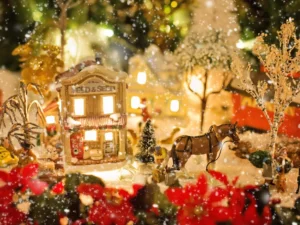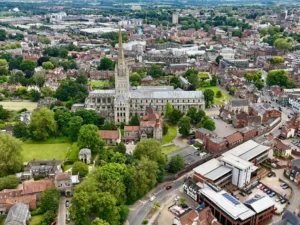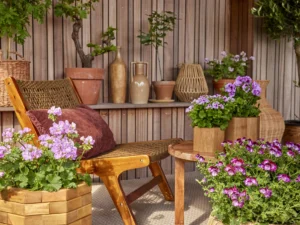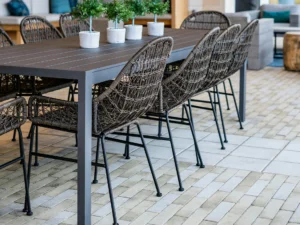Introduction
In today’s world, gardening has evolved beyond mere aesthetics; it has become a powerful tool for fostering sustainability and biodiversity in our environment. One of the most effective ways to achieve this ecological balance is by integrating bee friendly plants and other pollinator attractors into your garden landscape.
These specially selected plants not only contribute to the visual allure of your garden but also serve as essential pillars in supporting pollinator populations, which are integral to the health and stability of our ecosystem. By consciously opting for bee friendly plants, you are actively participating in the preservation of biodiversity and the promotion of a healthy environment.
These plants provide vital resources such as nectar and pollen, which are crucial for the survival and reproduction of bees, butterflies, birds, and other pollinators. Through their pollination activities, these creatures facilitate the reproduction of countless plant species, including many of the fruits, vegetables, and flowering plants that we rely on for food and beauty.
Different Types of Pollinators
Pollinators come in various forms, each playing a unique role in the pollination process:
Birds and the Bees
Bees are the most well-known pollinators, with honeybees and bumblebees being particularly effective. They are attracted to brightly coloured flowers and can transfer large amounts of pollen due to their hairy bodies. Birds, such as hummingbirds, are attracted to red, tubular flowers. As they feed on nectar, they inadvertently transfer pollen from flower to flower.
Butterflies and Moths
These insects are attracted to brightly coloured, fragrant flowers. They have long proboscises that allow them to reach nectar deep within flowers, transferring pollen in the process. It is important that gardeners supply other pollinators with plants that will attract them and not just focus on bee friendly plants. Moths and butterflies can work as amazing pollinators in your garden.
Bats and Beetles
In some regions, bats are important pollinators of nocturnal flowers. They are attracted to pale or white flowers that are highly fragrant at night. Beetles are some of the earliest pollinators, attracted to dull or white flowers that produce strong scents, often fruity or spicy.
Pollinators and Our Ecosystem
Their contributions extend far beyond the simple act of pollination, encompassing critical aspects of biodiversity, food production, and overall ecosystem health. Pollinators play a crucial role in maintaining biodiversity by facilitating cross-pollination among plant species. This process ensures genetic diversity within plant populations, which is essential for their long-term survival and adaptation to changing environmental conditions.
Moreover, pollinators are indispensable to global food production, as they contribute to the reproduction of approximately 90% of the world’s flowering plants and about 75% of global food crops. Many of the crops that rely on animal pollinators for reproduction, such as apples, almonds, and tomatoes, are staples of human diets worldwide.
As pollinators visit flowers to collect nectar and pollen, they inadvertently transfer pollen grains between flowers, enabling fertilisation and seed production. This process not only ensures the survival of plant species but also contributes to the availability of food and shelter for a wide range of animals, from insects to mammals.
Incorporating bee friendly plants and other pollinator attractors into our gardens and landscapes is a tangible way to support pollinator populations and promote their essential role in maintaining biodiversity
Consequences of Declining Pollinator Populations
The consequences of declining pollinator populations extend far beyond the immediate impact on plant reproduction, with profound implications for global food security, biodiversity, and ecosystem stability. One of the most significant consequences is the potential for reduced crop yields, particularly among crops that rely heavily on animal pollinators for reproduction.
Without the diligent work of pollinators, many crops would experience decreased yields, leading to food shortages and higher prices for consumers. By cultivating bee friendly plants and other pollinator attractors in agricultural landscapes, farmers can help mitigate the impact of declining pollinator populations and safeguard crop production. The loss of pollinators threatens the biodiversity of plant species worldwide. Without their assistance, these species would struggle to produce seeds and offspring.
As a result, this could lead to a loss of plant diversity, with far-reaching consequences for ecosystem health and resilience. By promoting the growth of bee friendly plants in gardens, parks, and natural areas, we can create vital refuges for pollinators and help preserve the genetic diversity of plant species for future generations.
The decline in pollinator populations can disrupt entire ecosystems, leading to imbalances that reverberate throughout the food chain. Plants play a foundational role in supporting ecosystems by providing food and habitat for other species, and their reproduction relies heavily on pollinators. Without adequate pollination, plants may fail to produce seeds and fruits, depriving other organisms of essential resources and disrupting ecological relationships
Pollinator and Bee Friendly Plants
Lavender (Lavandula)
Thrives in full sun and well-drained soil, making it an excellent choice for many garden environments. This fragrant plant is a magnet for bees and butterflies, offering abundant nectar that supports these vital pollinators. Its pleasing scent and attractive blooms also make lavender a favourite among gardeners, adding both beauty and ecological value to any outdoor space.
Coneflower (Echinacea)
Flourishes in full sun and well-drained soil, making it a versatile addition to any garden. Known for its long blooming season and high nectar content, coneflowers are bee friendly plants and are also loved by butterflies. They provide essential support for these pollinators throughout the summer. Its vibrant blooms not only enhance garden aesthetics but also play a crucial role in maintaining a healthy ecosystem.
Bee Balm (Monarda)
Thrives in environments with full sun to partial shade and moist soil, making it a versatile choice for many gardens. Its showy flowers and strong fragrance are particularly attractive to bees, butterflies, and hummingbirds, drawing these pollinators in droves. By adding Bee Balm to your garden, you not only enhance its visual appeal but also create a supportive habitat for a diverse range of pollinators.
Sunflower (Helianthus)
Likes environments with full sun and well-drained soil, making it a resilient and striking addition to any garden. Its large, vibrant flowers not only provide abundant pollen for bees but also produce seeds that are beloved by birds. By planting sunflowers, you not only attract beneficial pollinators but also contribute to the overall biodiversity of your garden, offering food and shelter for a variety of wildlife species.
Salvia (Salvia)
Prefers environments with full sun and well-drained soil, making it an ideal choice for sunny garden spots. Its tubular flowers make it one of the best bee friendly plants. It is also attractive to butterflies, and hummingbirds, providing essential nectar sources for these pollinators. With a long blooming period, Salvia ensures continuous floral displays throughout the season, enhancing the beauty of your garden while supporting local wildlife populations.
Foxglove (Digitalis)
Thrives in environments with partial shade and moist, well-drained soil, making it an excellent choice for gardens with varying light conditions. Its tall spikes of tubular flowers are highly attractive to bees and hummingbirds, offering a plentiful source of nectar for these essential pollinators. By incorporating Foxglove into your garden, you not only add vertical interest and beauty but also provide valuable resources for a diverse range of wildlife species.
Borage (Borago officinalis)
Well-suited to environments with full sun and well-drained soil, making it a resilient and adaptable plant for various garden settings. Its continuous blooming nature and high nectar production make it a great choice when looking for bee friendly plants, providing a reliable food source throughout the growing season. By introducing Borage into your garden, you not only support the health and vitality of bee populations but also enjoy the visual appeal of its delicate blue flowers.
Milkweed (Asclepias)
Thrives in environments with full sun and well-drained soil, making it an ideal addition to sunny garden spots. Its primary attraction is its vital role in the lifecycle of monarch butterflies, as it serves as both a food source for caterpillars and a nectar provider for adult butterflies. By incorporating Milkweed into your garden, you not only support the iconic monarch butterfly population but also contribute to the conservation of this beloved species.
Thyme (Thymus vulgaris)
Flourishes in environments with full sun and well-drained soil, making it an excellent choice for gardens with ample sunlight. Its aromatic foliage and small flowers are highly attractive to bees, providing a rich source of nectar for these essential pollinators. By incorporating Thyme into your garden, you not only enjoy the culinary benefits of this versatile herb but also support local bee populations and promote biodiversity in your outdoor space.
A Wildflower Mix
A mix offers a diverse array of pollinator and bee friendly plants, each with its own unique preferences, creating a dynamic and vibrant addition to any garden. While individual species may have varying environmental requirements, they generally thrive in sunny locations, making them well-suited for a range of garden settings.
This mix attracts a variety of pollinators, including bees, butterflies, and birds, thanks to its diverse array of flowers and foliage. By incorporating a Wildflower Mix into your garden, you create a thriving ecosystem that supports a wide range of pollinators and enhances overall biodiversity, making it a valuable asset to any outdoor space.
How NGS Can Help with Bee Friendly Plants
At NGS, we specialise in helping you select the best bee friendly plants and other pollinator attractors for your garden. Our experts can guide you in creating a garden that not only looks beautiful but also supports local wildlife. We offer advice on plant selection, garden layout, and additional features like bird baths and insect hotels to further encourage pollinators. To find out more about the services we offer, get in touch via our Contact Us page!
Lawn Alternatives with Bee Friendly Plants
For those who may not be able to maintain a traditional lawn, there are several attractive alternatives that support pollinators. These options not only provide aesthetic appeal but also create habitats for various pollinators, including bees, butterflies, and birds. Below are some excellent lawn alternatives that include bee-friendly plants:
Clover Lawns
Clover lawns are an excellent low-maintenance and drought-tolerant alternative to traditional grass lawns. Clover stays green throughout the summer, even in dry conditions, reducing the need for constant watering. Additionally, clover produces small, fragrant flowers that are rich in nectar, making it a valuable food source for bees and other pollinators. By opting for a clover lawn, you create a sustainable, bee-friendly habitat that requires less effort to maintain than a conventional lawn.
Ground Covers
Ground covers such as creeping thyme and sedum offer a lush, green alternative to grass while attracting a variety of pollinators. Creeping thyme, with its tiny purple flowers, is particularly favoured by bees, providing ample nectar. Sedum, on the other hand, blooms late in the season, offering a critical food source when other plants have finished flowering. These ground covers are hardy, require less watering and mowing than traditional lawns, and are excellent bee-friendly plants that enhance the biodiversity of your garden.
Wildflower Meadows
Transforming a portion of your yard into a wildflower meadow is a wonderful way to support pollinators and reduce maintenance. Wildflower meadows can be filled with a mix of native flowers, which are naturally adapted to your local environment and require minimal care. These meadows provide a continuous supply of nectar and pollen, attracting bees, butterflies, and other beneficial insects. By planting a variety of wildflowers, you ensure that your garden includes an array of bee-friendly plants that support pollinators throughout the growing season.
Perennial Beds
Creating perennial beds filled with flowering plants and shrubs is another excellent alternative to traditional lawns. Perennial flowers such as echinacea, bee balm, and lavender bloom at different times throughout the year, providing a consistent source of nectar for pollinators. Shrubs like butterfly bush and hydrangea also attract bees and butterflies with their vibrant blooms. These perennial beds require less maintenance than annual plantings and provide year-round interest and continuous support for pollinators, making them an ideal choice for incorporating bee-friendly plants into your garden.
Gravel Gardens
Gravel gardens are a stylish and practical option for those looking to reduce water usage while still supporting pollinators. By incorporating drought-tolerant plants like lavender, rosemary, and yarrow in a gravel setting, you create a low-maintenance garden that thrives in dry conditions. These plants are not only attractive and easy to care for but also rich in nectar, making them excellent bee-friendly plants. Gravel gardens require minimal watering and upkeep, providing a sustainable and aesthetically pleasing alternative to traditional lawns.
By considering these lawn alternatives, you can create a beautiful, low-maintenance garden that supports pollinators and contributes to the health of your local ecosystem. Incorporating bee-friendly plants into your landscape ensures that you are providing vital resources for bees and other pollinators, helping to sustain their populations and promote biodiversity.
Conclusion
In conclusion, fostering a garden that embraces and sustains pollinators is not only a fulfilling endeavour but also a profound contribution to the health and vitality of our broader ecosystem. By intentionally integrating bee friendly plants and other pollinator attractors into your garden landscape, you embark on a journey that transcends mere aesthetics, embracing a deeper commitment to biodiversity conservation and ecological stewardship.
The incorporation of bee friendly plants not only enriches the visual appeal of your garden but also serves as a cornerstone in maintaining the delicate balance of nature. As these plants flourish and bloom, they beckon bees, butterflies, and other pollinators, providing them with essential nourishment and habitat. In turn, these vital creatures reciprocate by pollinating flowers, facilitating the reproduction of countless plant species and ensuring the continuation of ecosystems that sustain life.
References














